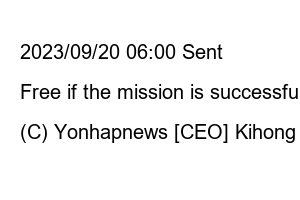국민연금 반환일시금 지급대상Article report
Autocomplete is turned on.
Delivery time2023-09-20 06:00
The public pension is a retirement income security system that pays benefits in the form of an annuity to compensate for loss of income after retirement.
The National Pension, Korea’s representative public pension system, requires subscribers to pay premiums for at least 10 years (120 months) until the age of 59 to receive old-age pension (a general form of national pension received upon reaching retirement age) for life until death. You can ride it.
Seoul Jung-gu National Pension Service Jongno Jung-gu Branch
(Seoul = Yonhap News) Reporter Seo Han-ki = Public pension is a retirement income security system that pays benefits in the form of a pension to compensate for loss of income after retirement.
The National Pension, Korea’s representative public pension system, requires subscribers to pay premiums for at least 10 years (120 months) until the age of 59 to receive old-age pension (a general form of national pension received upon reaching retirement age) for life until death. You can ride it.
The current insurance premium rate is 9% of income. If you are an employee subscriber, the burden is slightly lessened as you share the burden half and half with your company. However, if you are a local subscriber, you must bear the entire insurance premium.
If you do not faithfully pay your premiums for more than 10 years, you will not receive a pension.
However, you can only get back the insurance premiums you have paid, plus some interest.
This is called a lump sum refund.
In most cases, people who only receive a lump sum like this are those who have reached the age of 60, the mandatory national pension subscription age, even though the subscription period has not been 10 years due to payment exceptions, long-term arrears, etc.
In addition, there are cases where people lose their national pension eligibility due to overseas immigration, loss of nationality, etc. and receive a lump sum refund.
The system for paying a lump sum refund when the minimum subscription period is not met has changed little by little, focusing on the reason for payment.
When the national pension was first implemented in 1988, the only cases where a lump sum refund could be claimed were for subscription periods of less than 15 years. If a person who has been subscribed to the pension for less than 15 years reaches the age of 60, loses his or her subscription eligibility, and one year passes without becoming a subscriber, or if he or she dies, a small amount of interest is paid on the premiums paid by the person and the premiums paid by the employer. Additional payment was made.
Then, in March 1989, the payment requirements were somewhat relaxed so that people who had been enrolled for less than 15 years could claim a lump sum refund if they lost their nationality or moved abroad.
However, starting from January 1999, the reason for not becoming a subscriber after losing subscription eligibility and not becoming a subscriber for one year was abolished, and the payment requirements for the lump sum refund were strengthened, and at the same time, the subscription period to receive the lump sum refund was shortened from less than 15 years to less than 10 years.
The National Pension System adopts an ‘application system’ in which beneficiaries must apply for pension benefits within the deadline.
Like other special occupational pensions (civil servant pension, private school pension, military pension, etc.) or public/private financial transactions, if the right (right to receive benefits) is not exercised for a certain period of time, it is extinguished.
Other countries, such as Japan, also have similar payment expiration systems.
The right to receive a lump sum refund also has a deadline.
Initially, the statute of limitations for the right to receive the national pension lump sum refund was 5 years, but it was extended to 10 years from January 2018 to strengthen the right to receive it.
The statute of limitations is a device that eliminates rights if the state of ‘unexercised rights’ continues.
It was introduced with the intention of maintaining social order and excluding the so-called ‘those who sleep on their rights’ from the protection of the law. There is a statute of limitations not only on commercial transactions and monetary transactions between individuals, but also on bonds and debts of governments.
The National Pension Service has urged recipients of lump sum refunds to actively exercise their rights.
Since 2013, when the statute of limitations was extended by five years in 2018, the statute of limitations for beneficiaries of lump-sum refunds is scheduled to return starting this year, so if you do not claim the lump-sum refund before the expiration of the period, you will not be able to get the money you worked so hard to get. Because you can experience it.
The Pension Service already guided all non-claimants of the lump-sum refund for whom the statute of limitations is scheduled to expire last April to collect the lump-sum refund.
Through this, as of July 20th of this year, lump sum refunds have been paid to 290 people.
The Pension Service’s policy is to continue to receive and process requests for lump-sum refunds, and in cases where claims are not made, the policy will be to inform customers again 7 months before the expiration of the statute of limitations to ensure that they do not receive the lump-sum refund.
Lump sum payment is one of the tasks that the Pension Service considers important because it is directly related to public trust in the national pension.
This is why the Pension Service includes a detailed introduction to the statute of limitations system in the subscriber information guide to prevent people from not receiving the lump sum refund and the statute of limitations system due to ignorance.
shg@yna.co.kr
Report via KakaoTalk okjebo
2023/09/20 06:00 Sent
Free if the mission is successful!
Go to event
(C) Yonhapnews [CEO] Kihong Ki

